Ferrari drops the top on its mighty 12Cilindri super coupe to create the elegant Spider
We drive the new Ferrari 12Cilindri Spider, a last and glorious hurrah for the sound of the V12
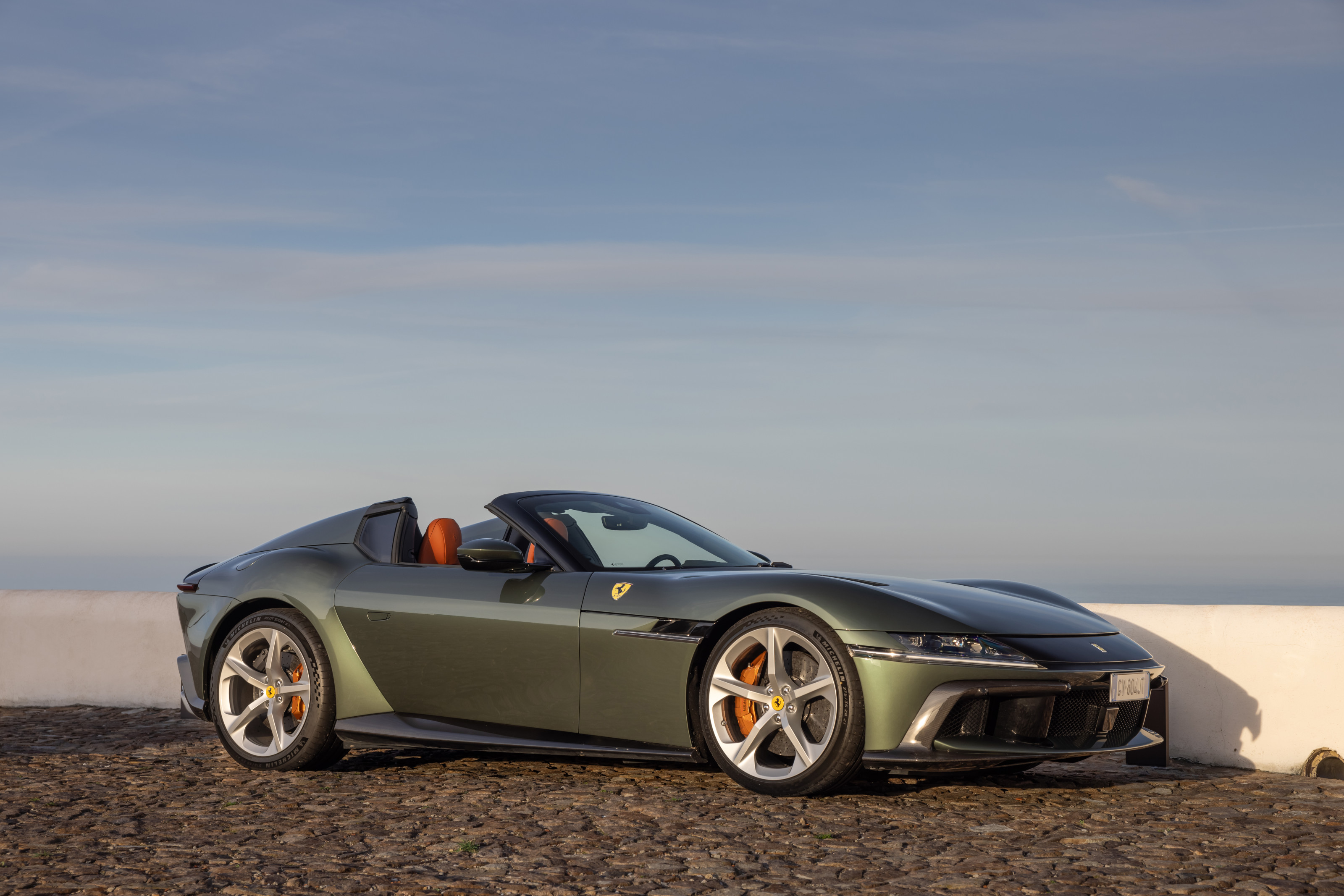
How should you feel when you step out of a Ferrari? Exhilarated? Exhausted? Relieved? Content? That very much depends on the model. Over the brand's 85-year history, Ferraris have run the gamut from refined to terrifying, with the latter often closely correlated to the value and rarity of the model. The new 12Cilindri Spider should, by rights, fall into the former camp, being a front-engined grand tourer in the classic mould, designed to evoke Riviera drives, the glamour of long-distance travel, and a general sense of wellbeing.
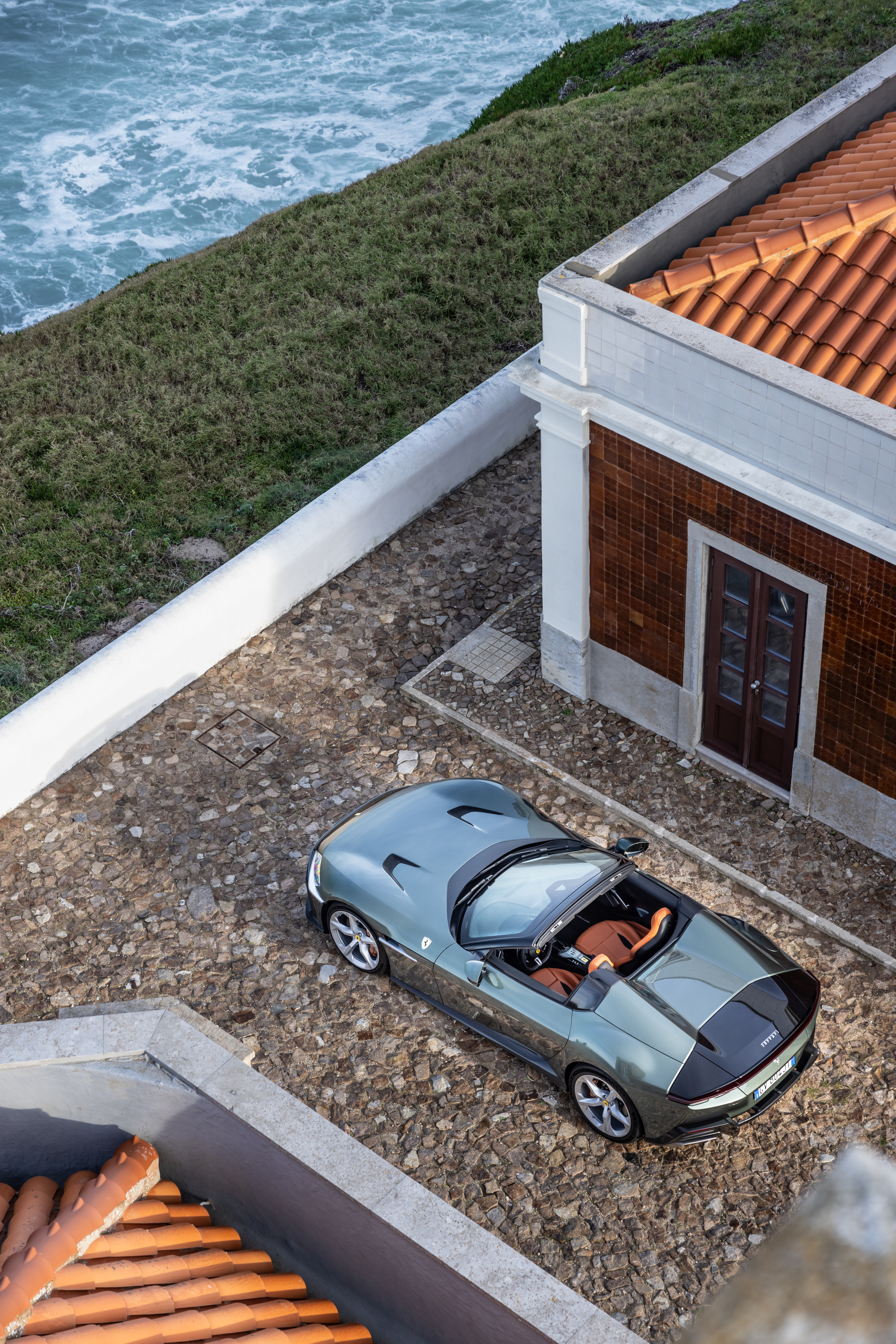
Ferrari 12Cilindri Spider
One must assume that most customers of one of the most world’s exclusive automotive brands seek short sharp doses of adrenaline, rather than a sweaty anxiety-wracked experience. For that reason, the 12Cilindri is perfectly content to potter about using just a trickle of the 830 CV equivalent to a shade under 820 hp) developed by the 6.5 litre V12. Unlike its nearest V12-engined rival, the Aston Martin Vanquish which adds twin turbochargers to its slightly smaller powertrain to make 835 CV, the Ferrari’s engine is naturally aspirated (note also the negligible but also significant performance disparity between the two old rivals).
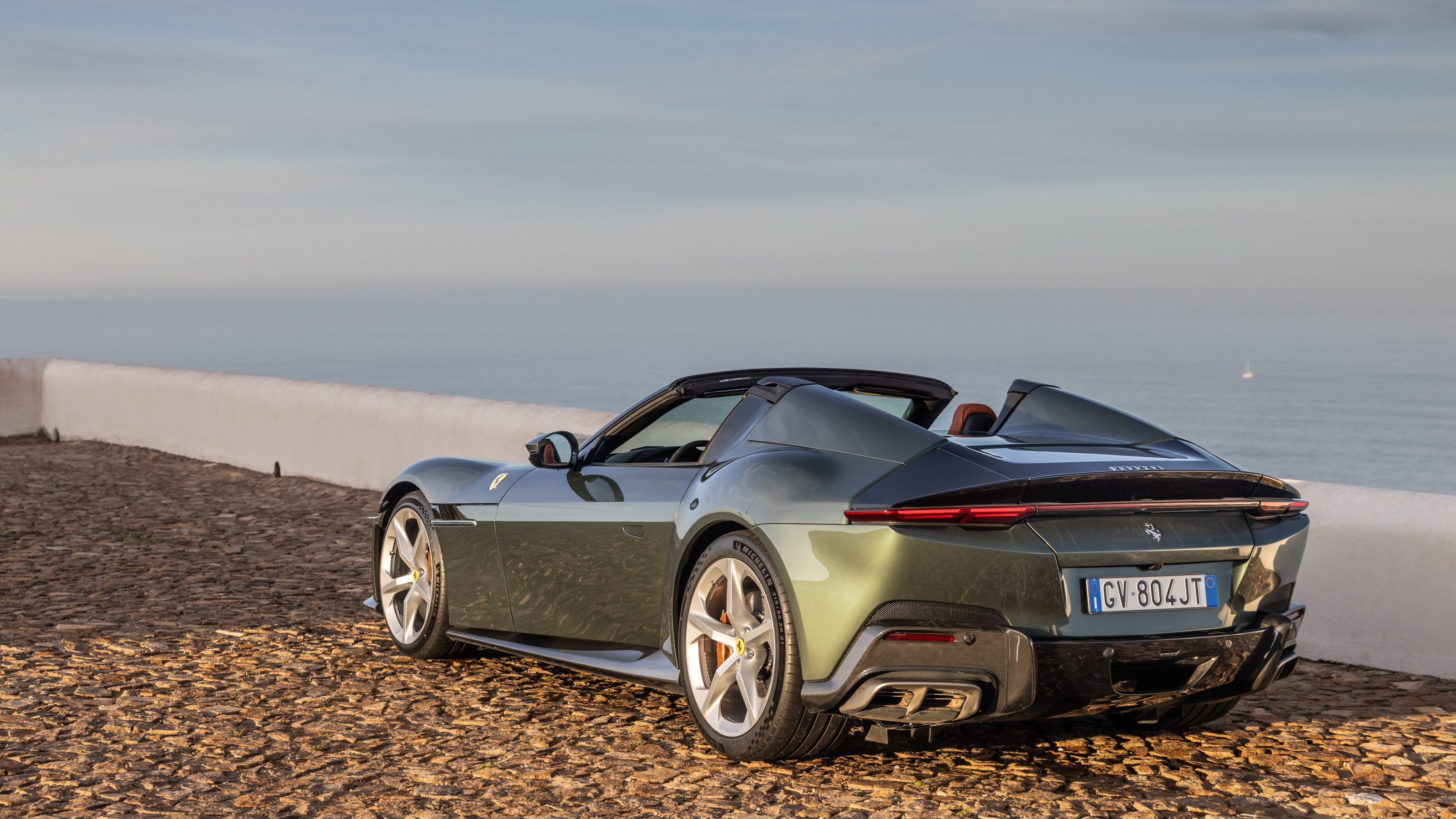
Ferrari 12Cilindri Spider
On the admittedly less than glassy smooth roads outside Lisbon, the 12Cilindri Spider encouraged stately rather than superfast progress. Attention was snared from all and sundry (especially when the press fleet, resplendent in Verde Toscana green, was grouped in a pricey convoy). Despite its sheer size – at over 4.7m long and nearly 2.2m wide the 12Cilindri has an SUV-sized footprint – it was easy to thread the long nose through small villages and into twisting roads that hugged the edge of the Portuguese landscape. Four-wheel steering aids manoeuvrability at low speeds.
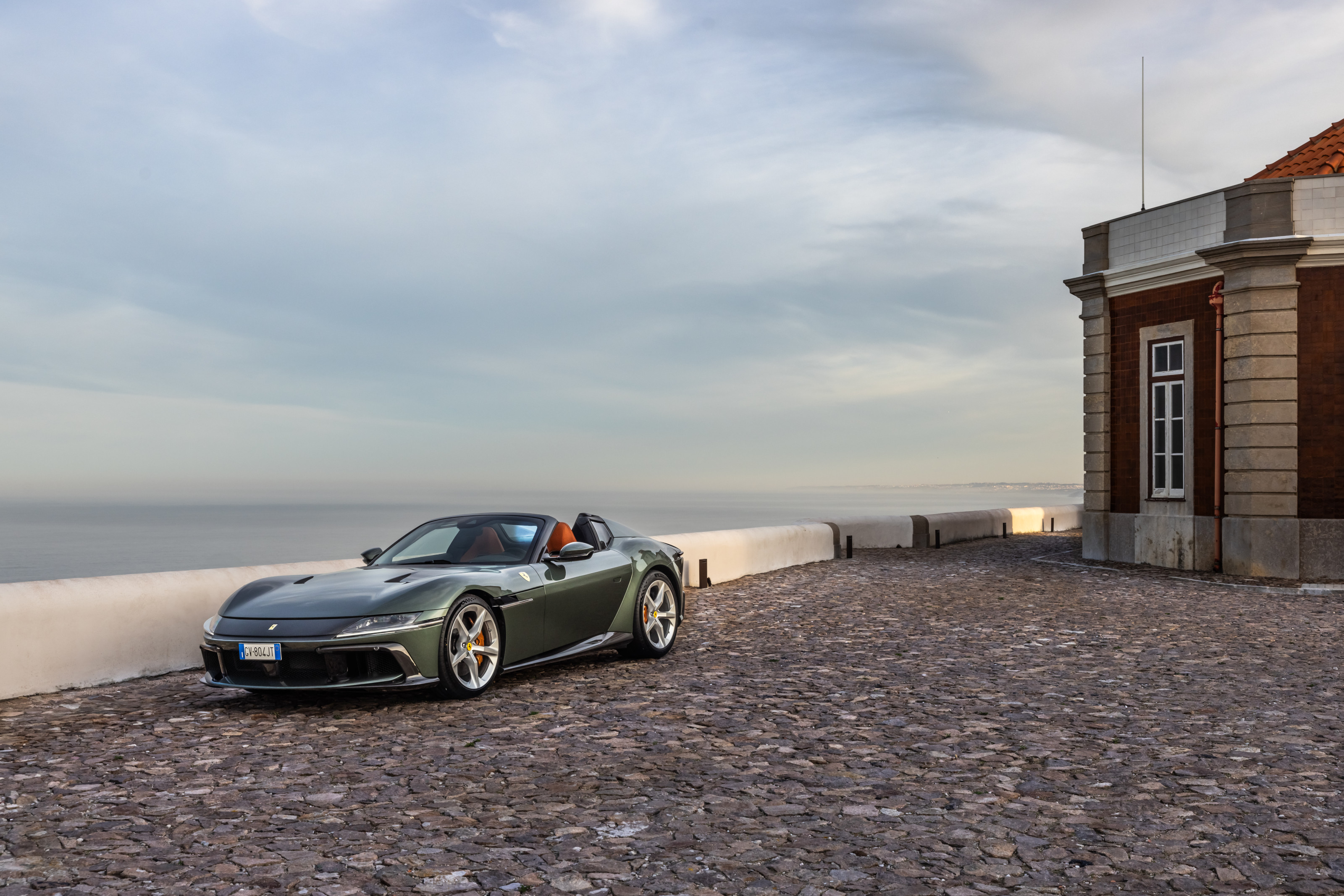
Ferrari 12Cilindri Spider
Like many modern sports cars, the sound, fury and dynamic precision of the 12Cilindri can be increased by degrees, in this using the F1-inspired Manettino switch on the steering wheel which flips through the driving modes, from the default ‘Sport’ through to a less aggressive ‘Comfort Mode’ and the halo ‘Race Mode’, which dials back the response from the car’s many and various handling systems and dynamic devices.
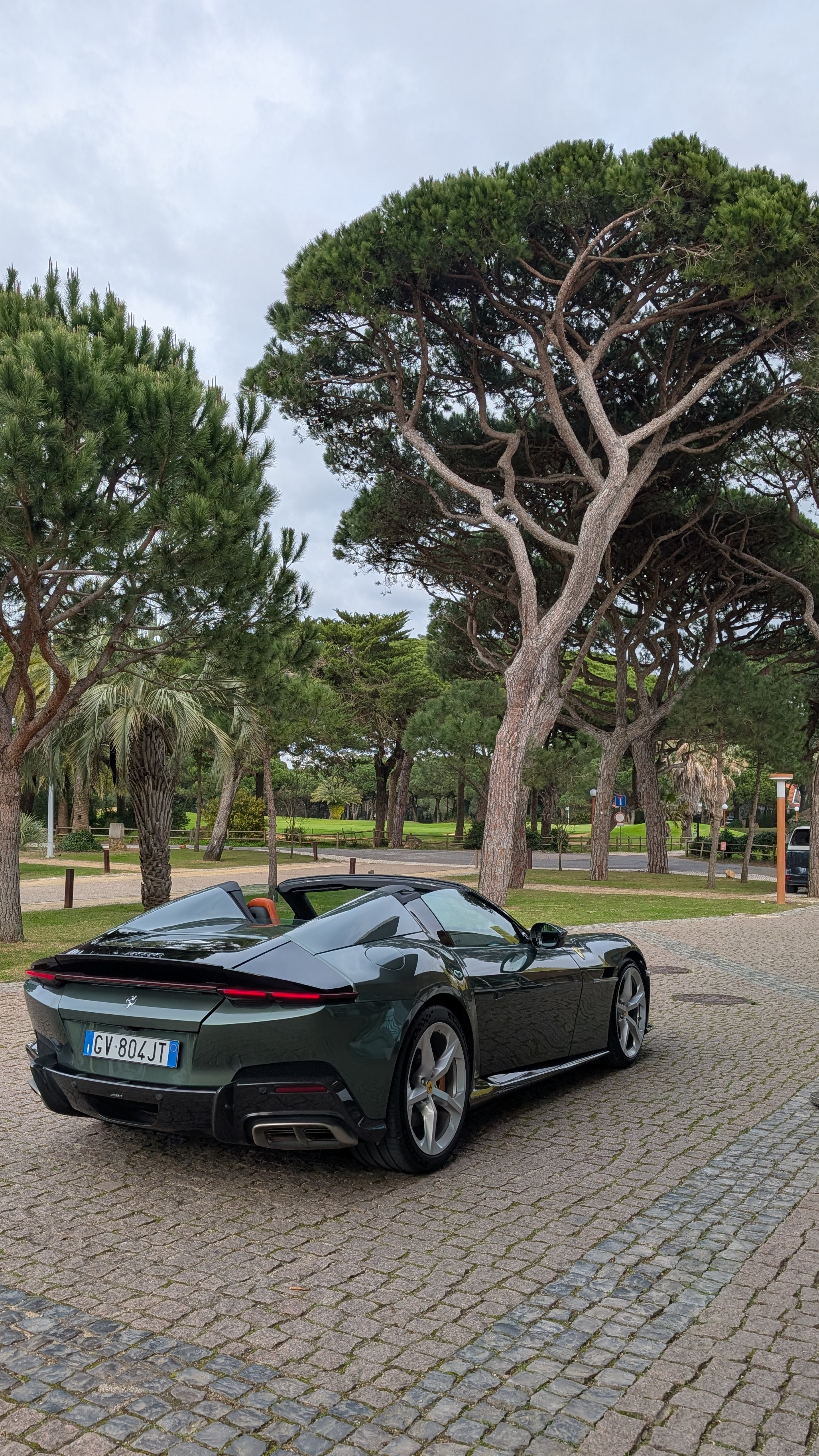
Ferrari 12Cilindri Spider
On a quiet backroad, the over-aggressive deployment of the accelerator illustrated why 830 CV needs electronic management, with the car throwing its big rear wheels to one side and demanding an instant course correction. Race Mode, it’s safe to say, is not one for amateurs.
The majority of Ferrari owners are quite practised, not just in piloting the machines themselves but in navigating the complex relationship they have the company. Ferraristi would claim loyalty, but the company itself demands fealty, including an unwritten code that requires you to acquire ‘entry-level’ models in order to get a shot at buying a ‘special’. These limited-edition cars are four-wheeled index funds, tied to decades of accelerating prices.
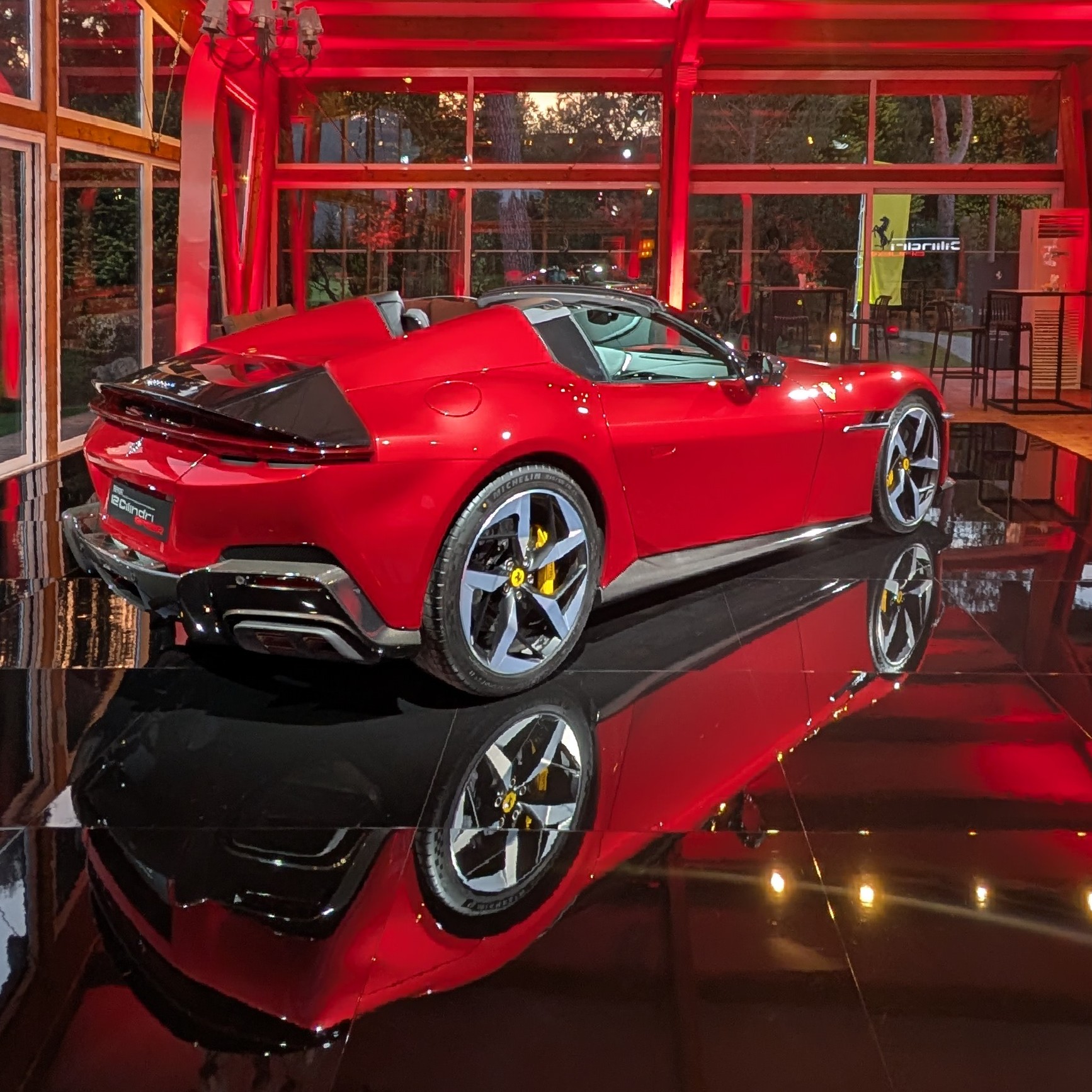
Ferrari 12Cilindri Spider
It’s scarcity and specialty that drives the undimmable lustre of the brand and every journey in a Ferrari confirms this. Both coupe and Spider versions of the 12Cilindri have attracted criticism for the way they look, but in the metal there’s no questioning the calibre of the design. It’s a sensational piece of work, both ‘disruptive’ and futuristic, according to Flavio Manzoni, Ferrari’s chief design officer.
Wallpaper* Newsletter
Receive our daily digest of inspiration, escapism and design stories from around the world direct to your inbox.
There’s also a naked dose of inspiration from the halcyon days of GT motoring, the 1950s and 1960s, and Ferrari’s 1968 365 GTB4, in particular. The opening presentation even throws up a few evocative images from the minds of Syd Mead and Pininfarina at their most mind-meltingly 1970s (the 1970 Ferrari 512 S Modulo), along with Italian product design from the era, conjuring up an aesthetic of space-age optimism that still resonates many decades down the line.
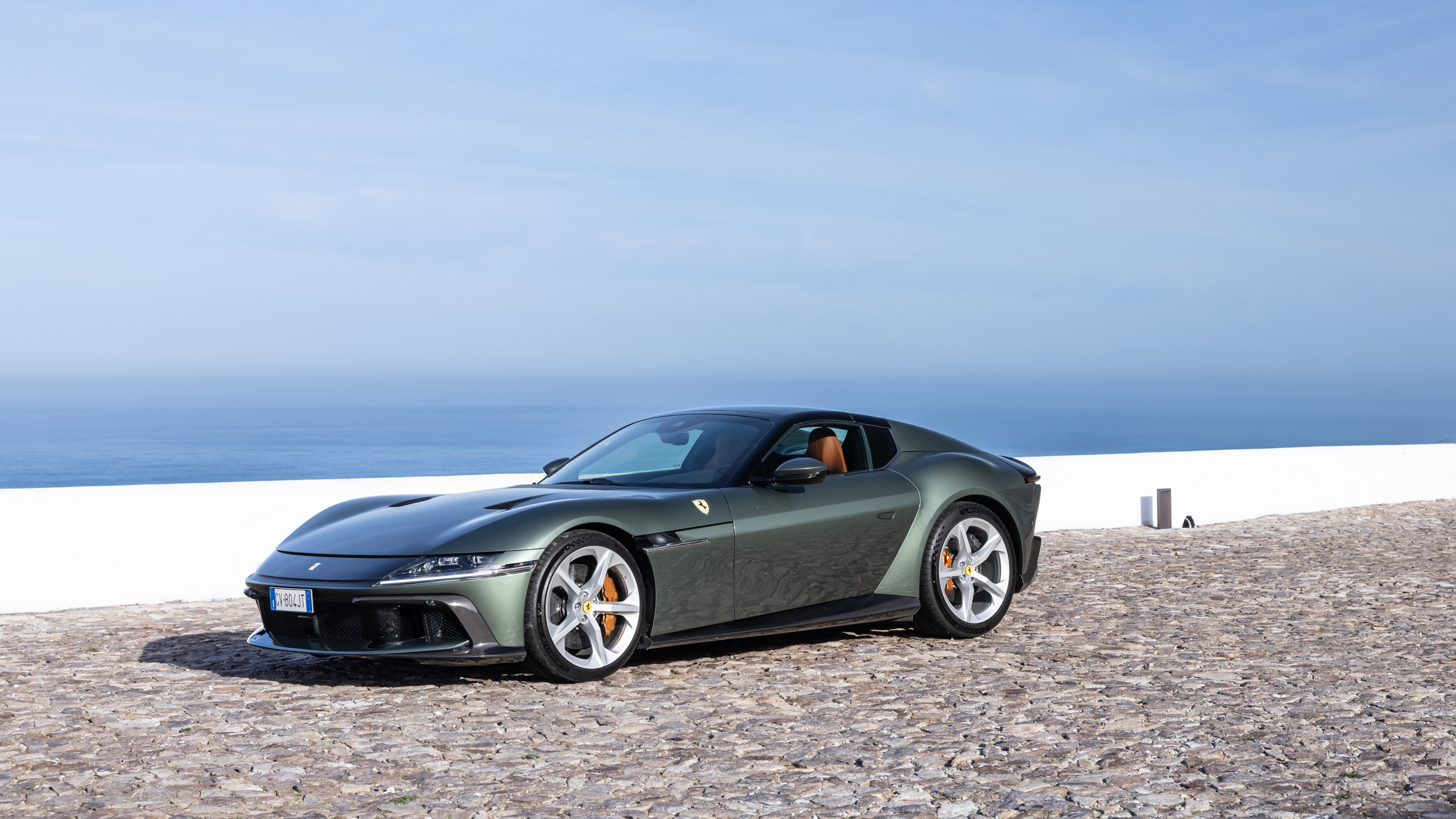
Ferrari 12Cilindri Spider
These are the functional forms the 12Cilindri is meant to bring to mind, evoking a sense of time and place that moors the car within the current Ferrari range, all bound up in the mantra ‘different Ferraris for different moments’. At this point in the presentation, Ferrari wheels out a VT from Enzo Ferrari himself, expressing the opinion that the ‘engine is the heart and soul of every Ferrari’. Stirring words, even if they will inevitably become problematic come the autumn when the company starts hawking its first ever EV.
But that’s for another time. As we noted in our review of the coupe, the 12Cilindri adheres to the founder’s dictum by being an ‘unapologetic, screaming supercar’ when required. Calm and repose are also available, but this is a car that celebrates the sound of combustion like no other, even more so in Spider configuration.
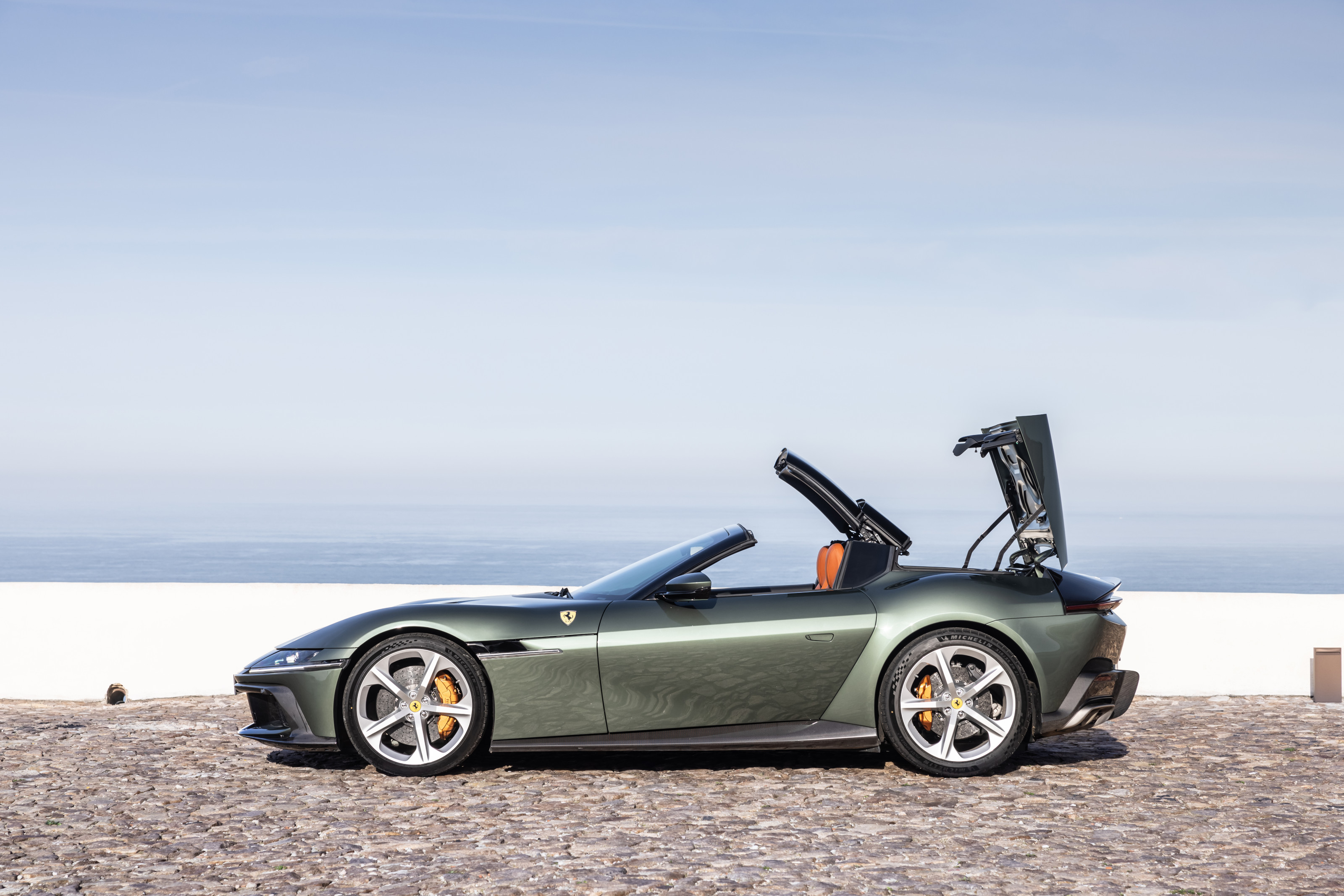
Ferrari 12Cilindri Spider
To set the 12Cilindri Spider apart from the less brutish Roma Spider, there’s a folding hardtop instead of canvas. Capable of opening and closing in a mere 14 seconds, the entire mechanism sits beneath a beautifully integrated tonneau cover.
Twin rear fairings stretch back from the headrests; these remain in place when the roof is down, giving the Spider more of a targa feel a conventional convertible. With the roof down, there’s not much buffeting or wind noise, thanks in part to the extensive aerodynamic work but also by virtue of the fact that you’re sat deep within the car’s tub, a steeply raked windscreen directing airflow over the cabin.
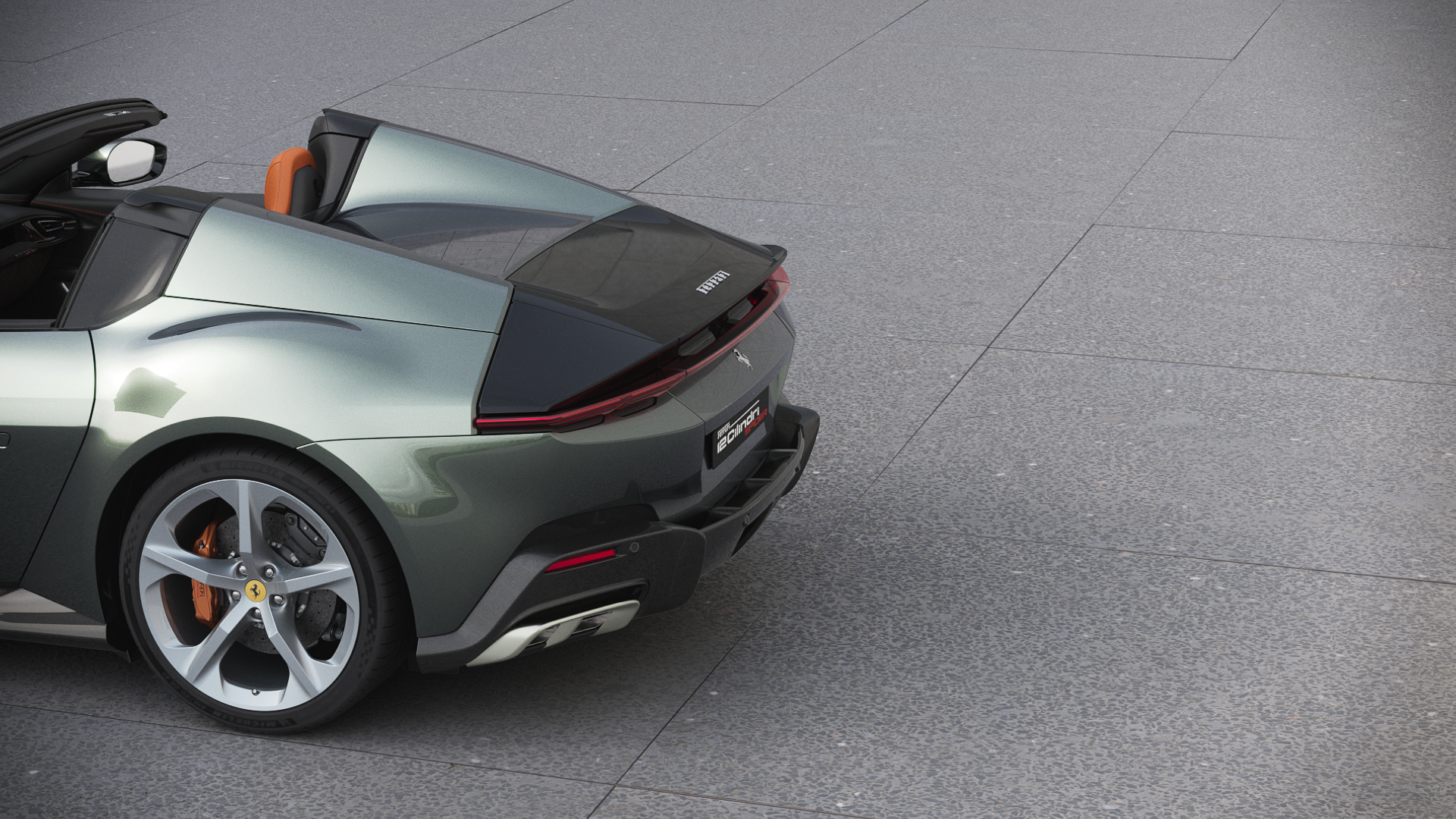
Ferrari 12Cilindri Spider
The technical specification is fearsomely comprehensive, with everything supported by a seven-year warranty. To comply with current regulations there’s a full set of ADAS (easily deactivated by a long press on the small button on the steering wheel). The space frame aluminium chassis, carbon body panels, massive front-hinged body and subtle touches like the small aero flaps on the buttresses show a respect for design decisions big and small.
Even though it’s one of the best Ferrari cockpits of recent memory, the ergonomic choices are still a bit wayward – good luck with stabbing at either the central or passenger touch screen when the handling is being pushed to the limit.
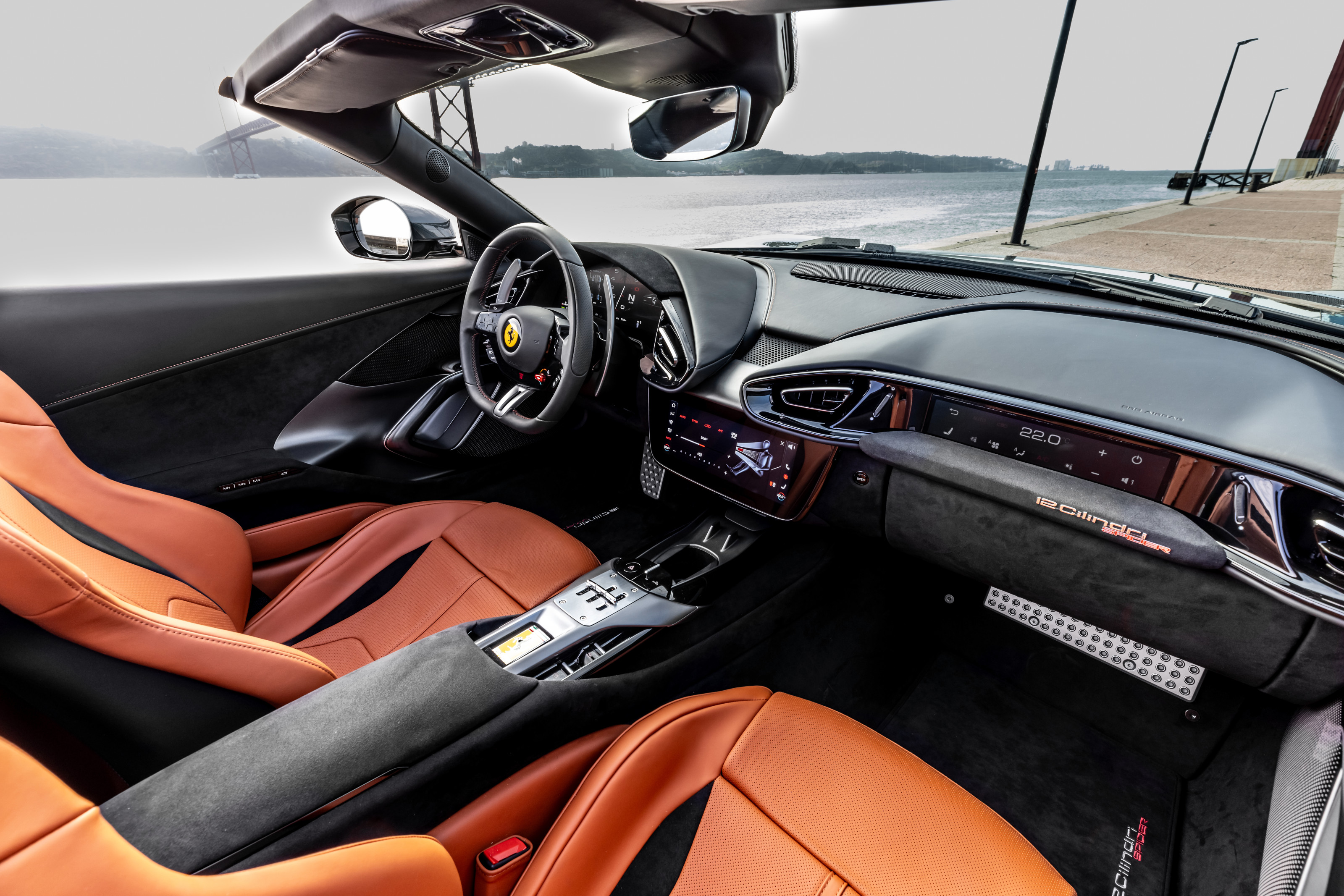
Ferrari 12Cilindri Spider interior
The option list is a work of art by itself, with tens if not hundreds of thousands of pounds’ worth of additional trim and equipment specifications with which to busy yourself. Regardless of how you specify your Spider, Ferrari will insist that the roof, rear deck and front light bar remain black to creating a form that contrasts with the body. Even if you specify black paint, these elements will still be made to stand out.
Naturally, armies of aftermarket companies exist to cater to the tasteless and could presumably override this aesthetic stipulation. With Ferrari recently putting its handmade Italian heel down and refusing to let customers order tasteless specifications and colour combinations, such firms will be in even greater demand; a Ferrari is no longer a reliable indicator of taste or discernment.
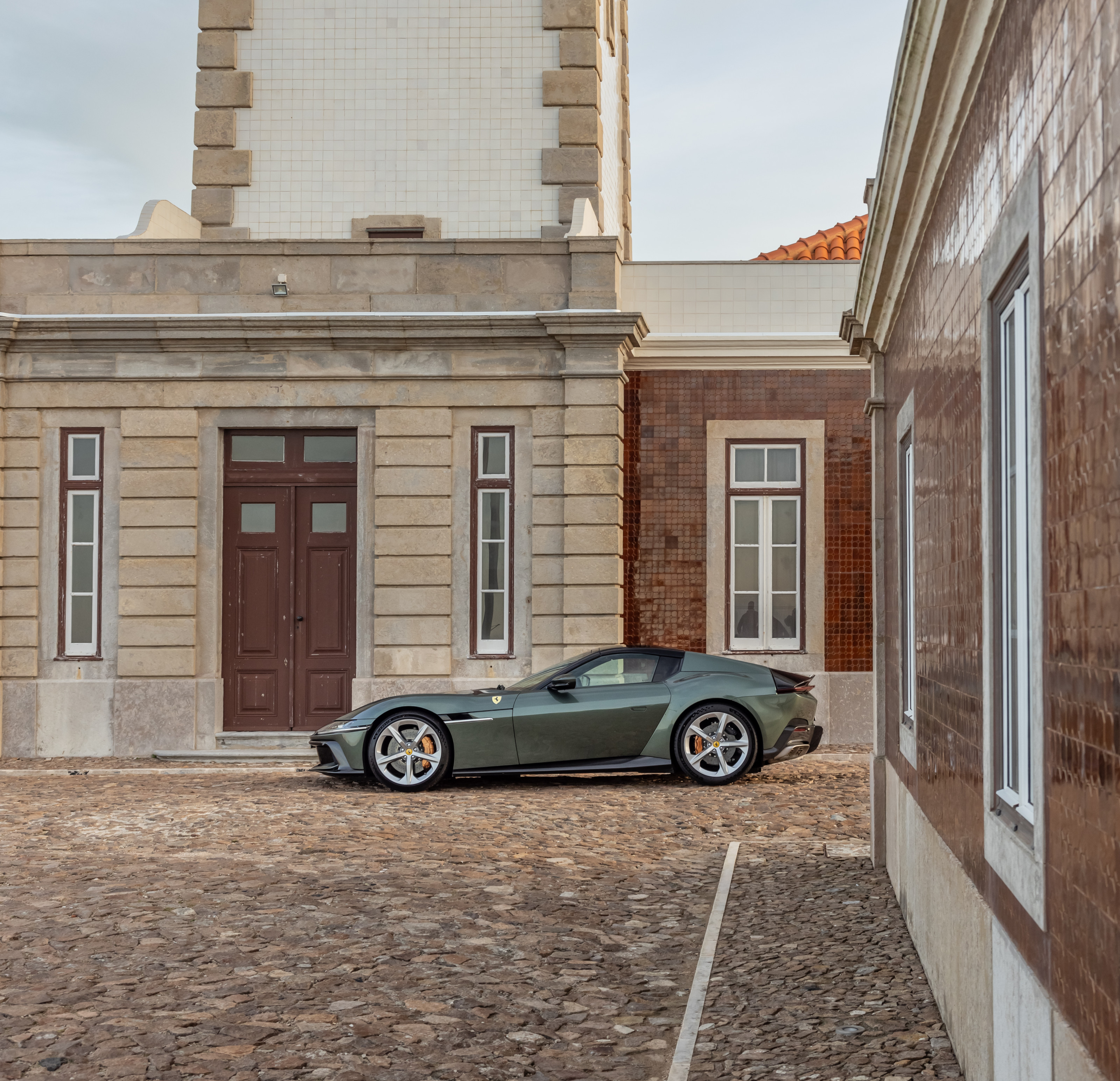
Ferrari 12Cilindri Spider
Could this be the last car ever to be named after its combustion engine? Perhaps. But even if this is truly the last ever Ferrari V12, the firm is kissing goodbye to its 12-cylinder heart and heritage with a great deal of style.
Ferrari 12Cilindri Spider, from £366,500, Ferrari.com, @Ferrari
Jonathan Bell has written for Wallpaper* magazine since 1999, covering everything from architecture and transport design to books, tech and graphic design. He is now the magazine’s Transport and Technology Editor. Jonathan has written and edited 15 books, including Concept Car Design, 21st Century House, and The New Modern House. He is also the host of Wallpaper’s first podcast.
-
 Put these emerging artists on your radar
Put these emerging artists on your radarThis crop of six new talents is poised to shake up the art world. Get to know them now
By Tianna Williams
-
 Dining at Pyrá feels like a Mediterranean kiss on both cheeks
Dining at Pyrá feels like a Mediterranean kiss on both cheeksDesigned by House of Dré, this Lonsdale Road addition dishes up an enticing fusion of Greek and Spanish cooking
By Sofia de la Cruz
-
 Creased, crumpled: S/S 2025 menswear is about clothes that have ‘lived a life’
Creased, crumpled: S/S 2025 menswear is about clothes that have ‘lived a life’The S/S 2025 menswear collections see designers embrace the creased and the crumpled, conjuring a mood of laidback languor that ran through the season – captured here by photographer Steve Harnacke and stylist Nicola Neri for Wallpaper*
By Jack Moss
-
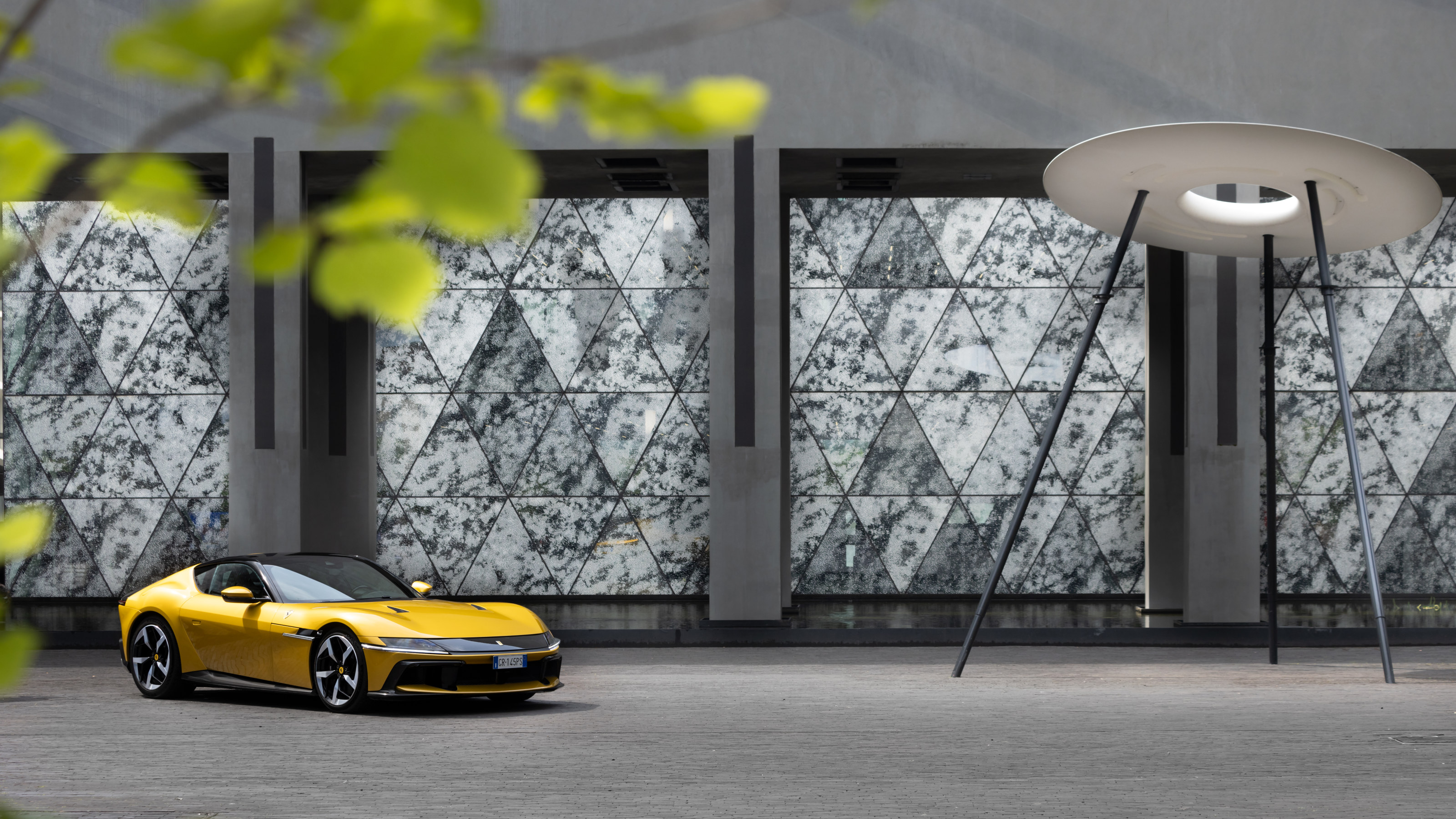 The Ferrari 12Cilindri is the ultimate expression of the marque’s greatest engine
The Ferrari 12Cilindri is the ultimate expression of the marque’s greatest engineWe sample Ferrari's latest, the mighty front-engined grand tourer that bears a simple descriptive name, 12Cilindri
By Rory FH Smith
-
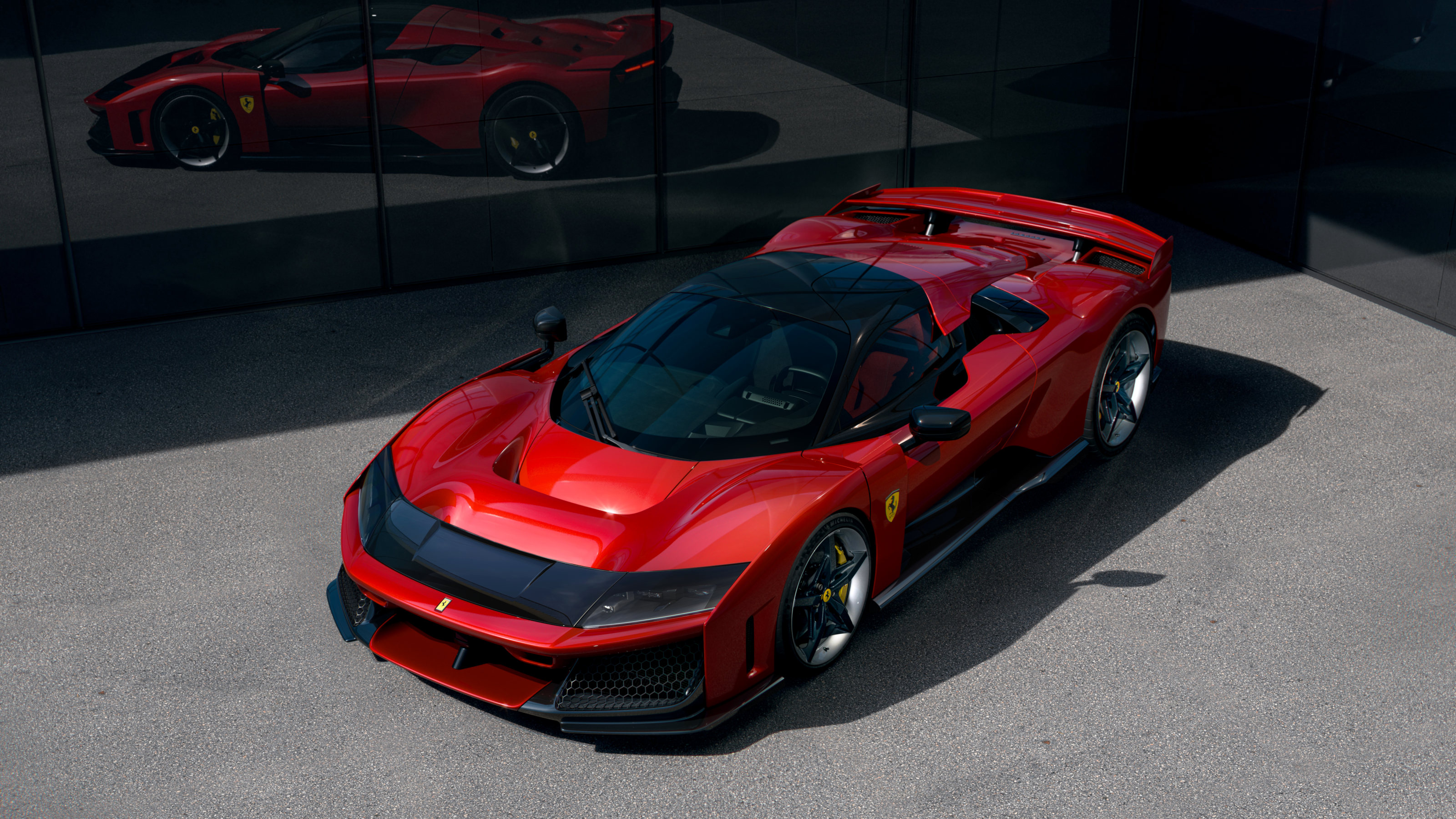 The Ferrari F80 continues the company's tradition of using supercars to showcase tech
The Ferrari F80 continues the company's tradition of using supercars to showcase techJust 799 examples of Ferrari’s ferociously complex and high-tech styled F80 will be made, helping give shape to the sports cars of tomorrow
By Jonathan Bell
-
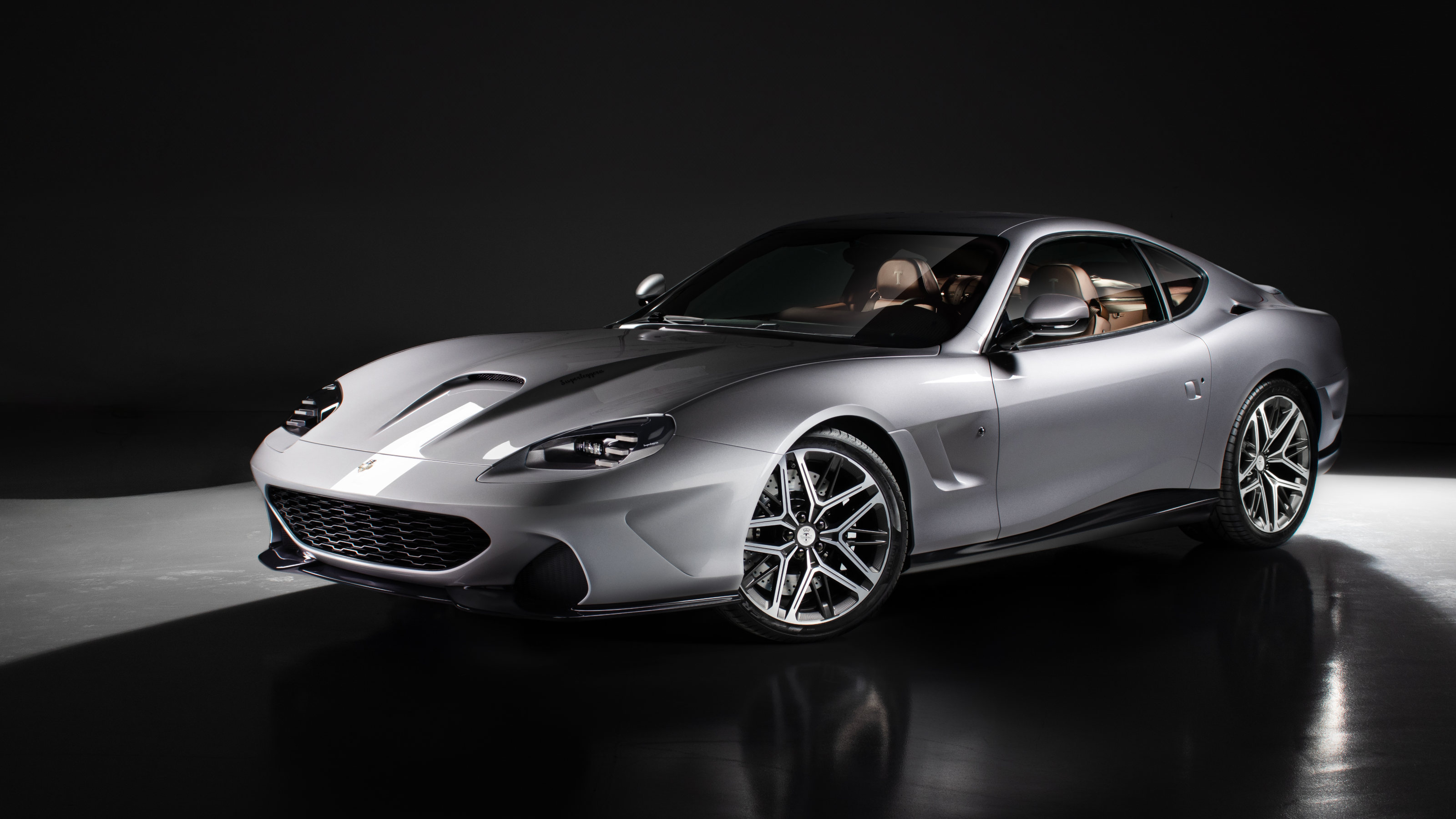 A 90s icon of Italian sports car design is reborn as the Veloce12 by Touring Superleggera
A 90s icon of Italian sports car design is reborn as the Veloce12 by Touring SuperleggeraCarrozzeria Touring Superleggera have transformed the Ferrari 550 Maranello into an all-analogue, carbon-bodied GT for the modern era
By Jonathan Bell
-
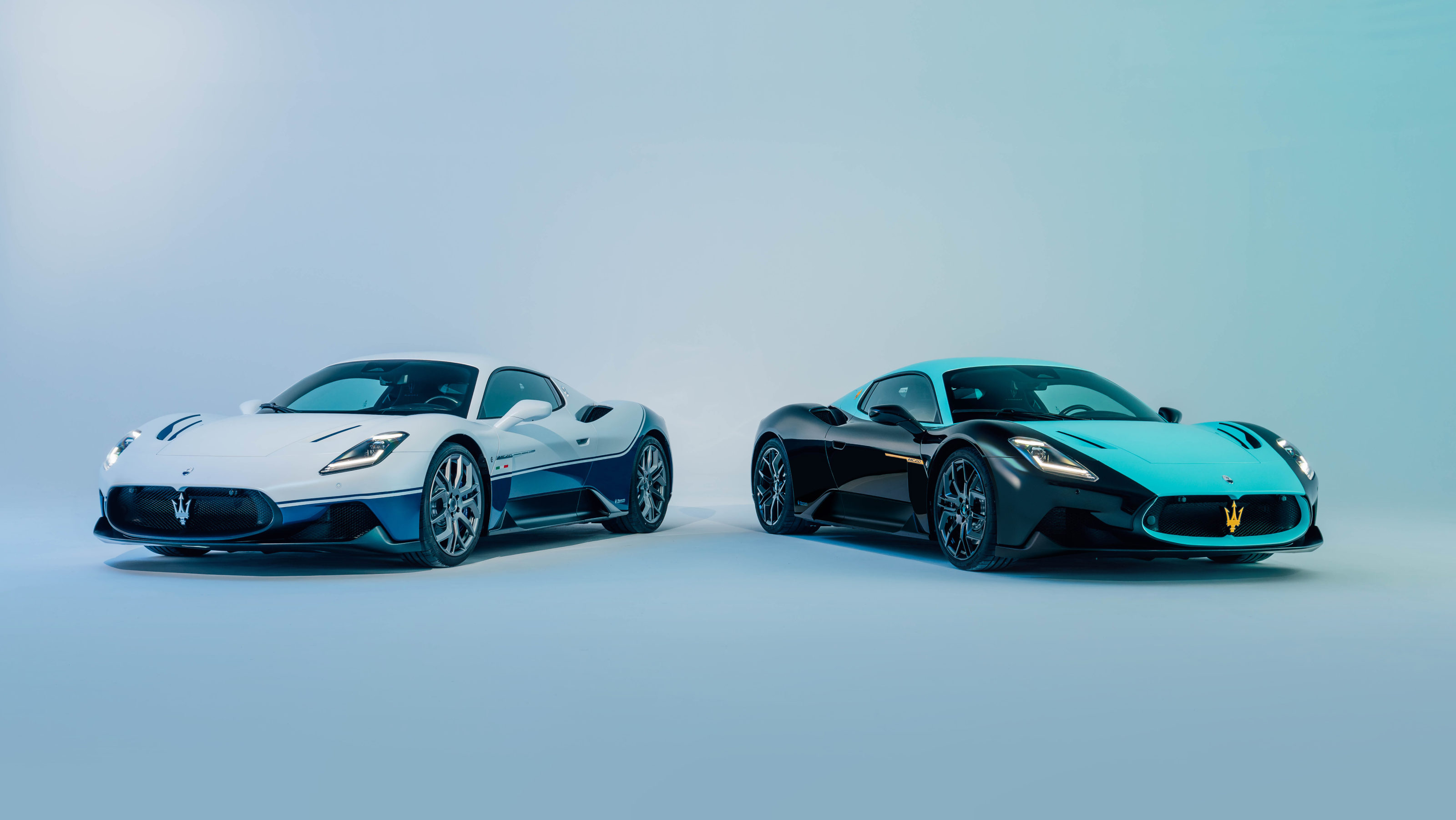 Meet two new Maserati MC20 supercars, the Leggenda and the Icona
Meet two new Maserati MC20 supercars, the Leggenda and the IconaThese Maserati MC20 special editions honour the company’s racing heritage and the 20th anniversary of the Maserati MC12 hypercar
By Jonathan Bell
-
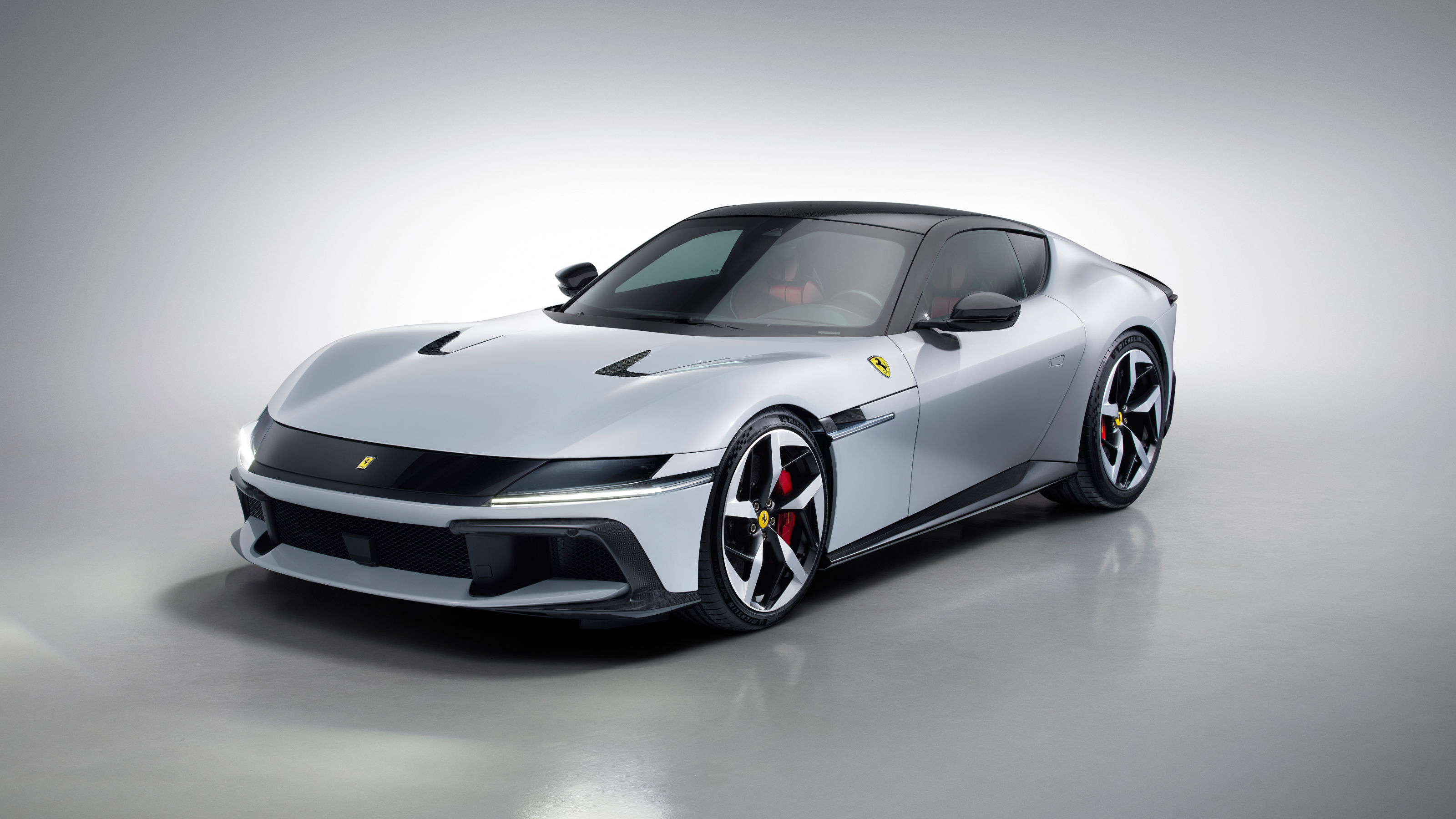 New Ferrari 12Cilindri is a purist, V12-powered two-seater Berlinetta
New Ferrari 12Cilindri is a purist, V12-powered two-seater BerlinettaThe new Ferrari 12Cilindri, available as both a coupé and a Spider, pares back the brand’s classic design tropes to bare essentials to create a timeless luxury GT
By Jonathan Bell
-
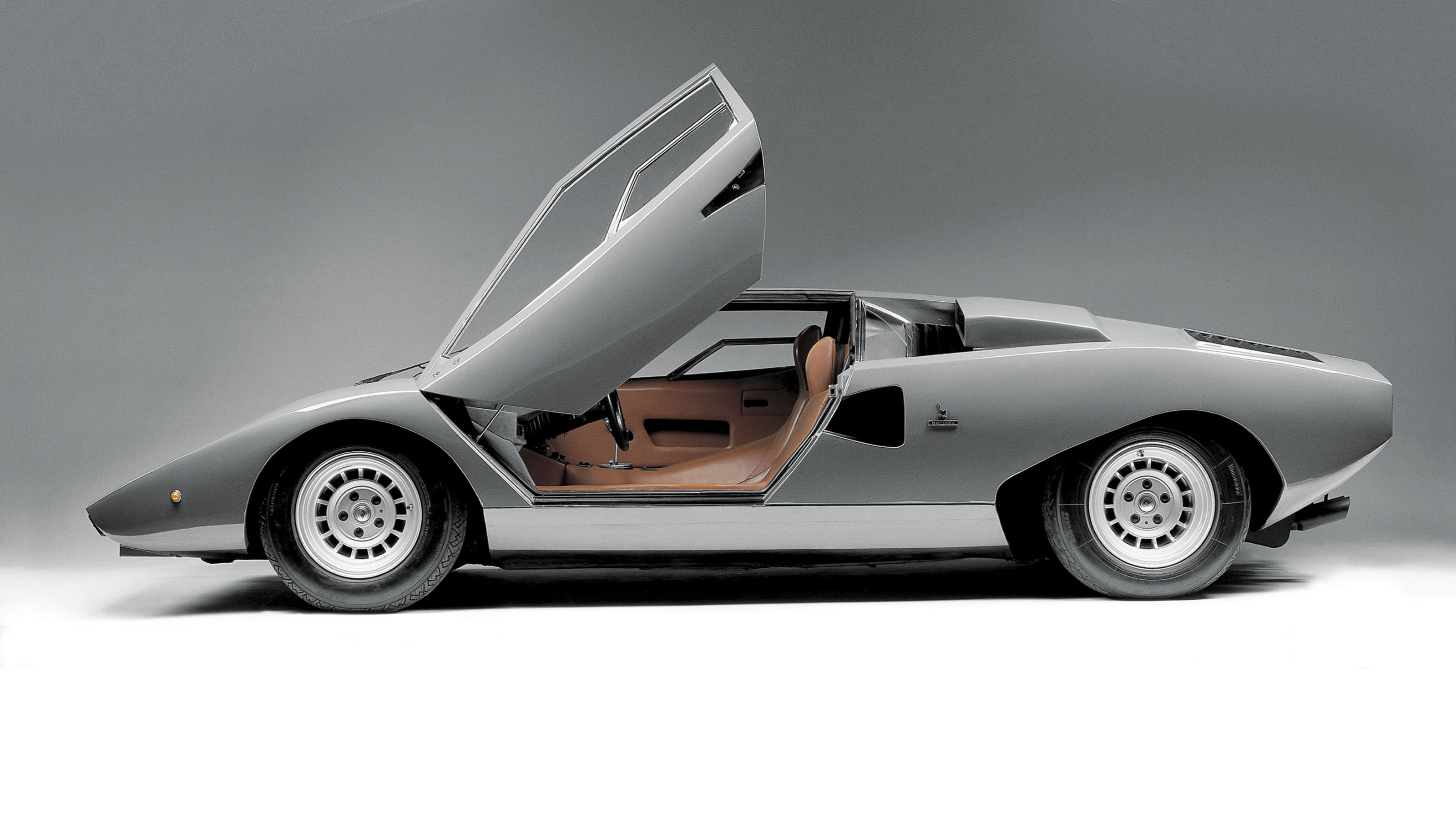 In memoriam: automotive designer Marcello Gandini (1938-2024)
In memoriam: automotive designer Marcello Gandini (1938-2024)As the man behind the form of the modern supercar, Marcello Gandini was hugely influential. We look back at some of his most accomplished designs
By Jonathan Bell
-
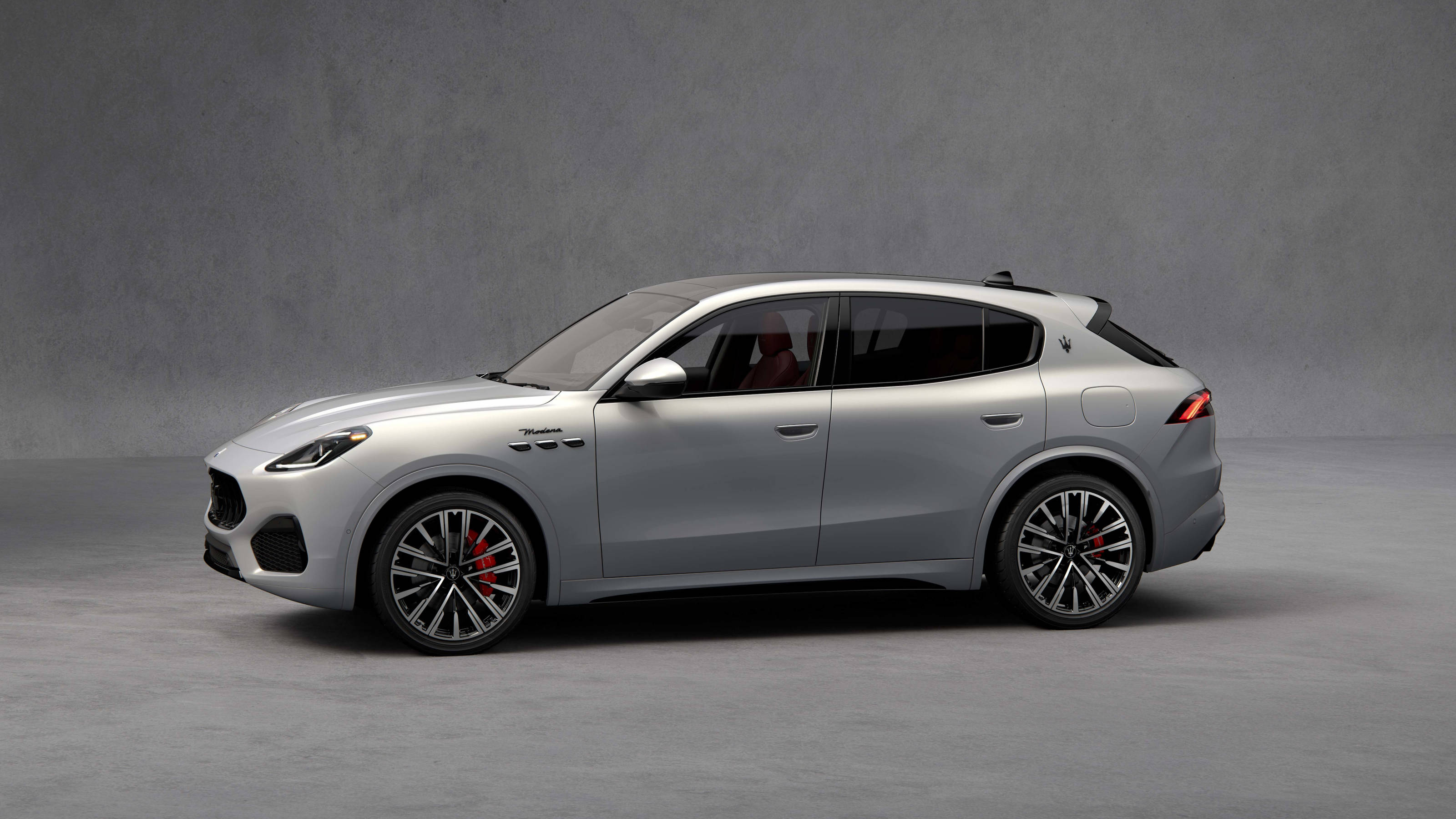 Maserati Grecale Modena hits the middle ground, an SUV for the badge-conscious
Maserati Grecale Modena hits the middle ground, an SUV for the badge-consciousThe Maserati Grecale Modena shows just how far a brand has to go to make an impact in the contemporary car market. How does it reflect on the Italian company’s long heritage?
By Jonathan Bell
-
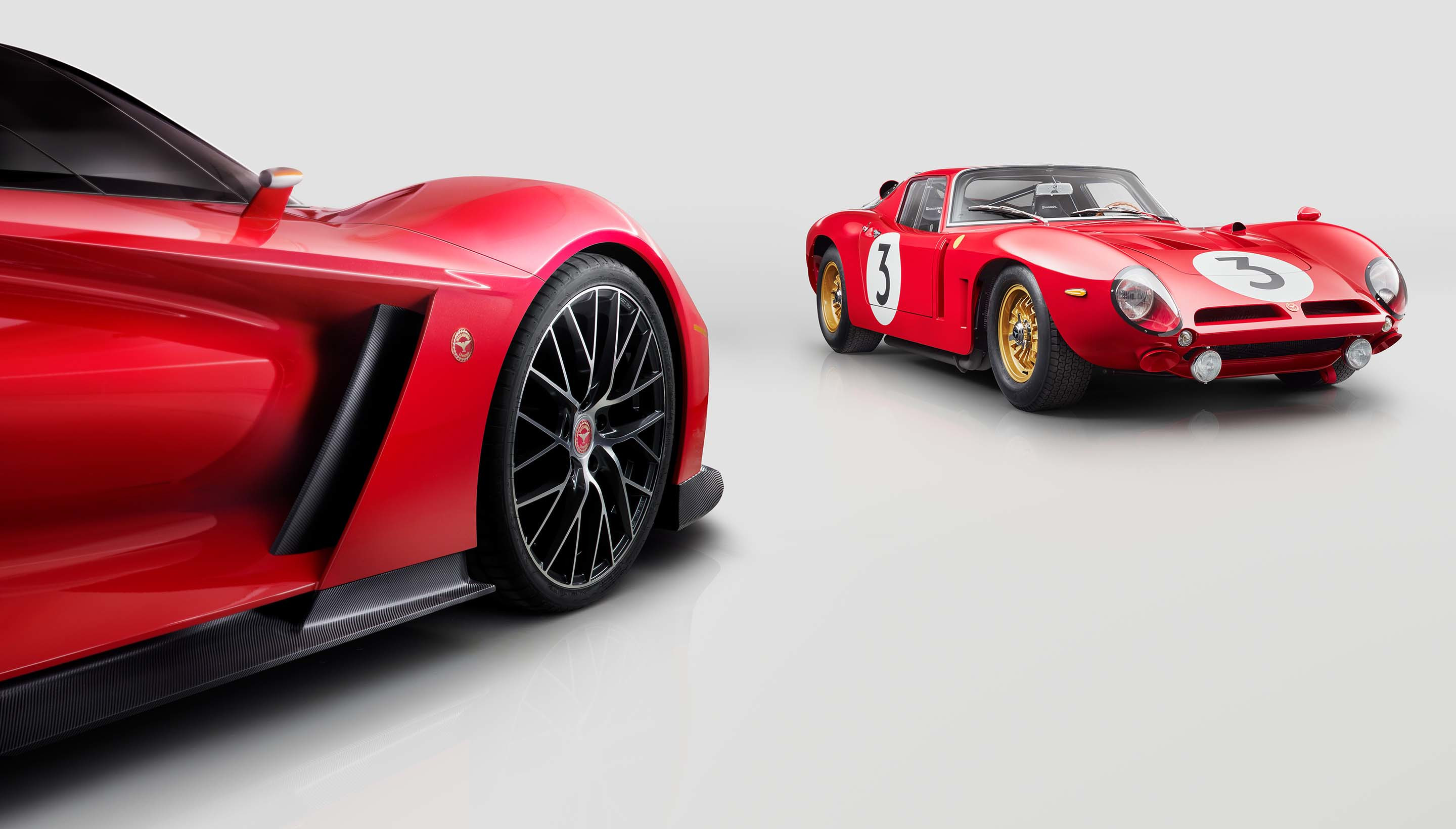 Restomod Italian cars: Lancia, Alfa Romeo, Fiat and more classics reborn for modern roads
Restomod Italian cars: Lancia, Alfa Romeo, Fiat and more classics reborn for modern roadsIn the world of restomod Italian cars, everything from 1960s race cars to cult city vehicles can be restored, reshaped and updated for modern driving and fastidious collectors
By Jonathan Bell